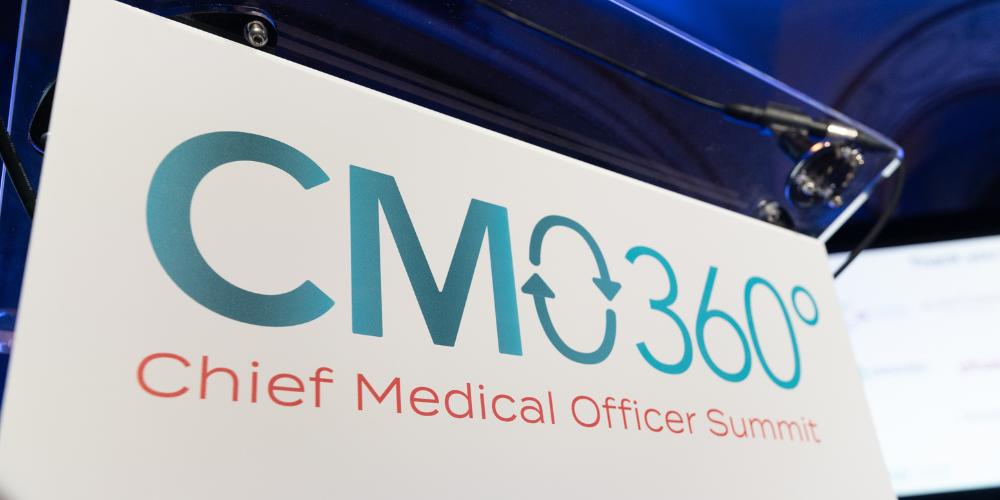
As someone who has employed multiple CMOs since 2006, how do you evaluate CMOs?
The ideal chief medical officer is an excellent clinical trialist who has conducted years’ worth of clinical trials and knows the ins and outs of putting trials together. On top of that, it’s important to be an expert in the indication of the drug you are developing.
In the early years, we didn't have a chief medical officer because we were in the earlier stages of developing technology, and our clinical trials were simpler. Even though we were developing drugs in the pain space at that time, our first CMO was Dr Peter Langecker who was a highly experienced clinical trialist in the field of oncology. He served us very well and did an excellent job conducting clinical trials. After Peter left, we then moved to Dr Joe Stauffer who had experience in the pain space. More recently, we’ve transitioned into the hepatology space with our lead product candidate being developed for alcohol-associated hepatitis (AH) and so we’ve hired Dr Norman Sussman, who has spent many years in academia as a liver specialist. He has great clinical experience, knows a lot about the disease and has good connections with most of the KOLs in the space.
DURECT has an EVP of R&D, a VP of Clinical Development and a CMO on its leadership team. How are those roles differentiated within your organization?
Dr David Ellis, our VP of Clinical Development, has been with the company the longest. He was involved in the synthesis of a drug with a PhD in organic chemistry and then went to medical school and ended up conducting the clinical trials for that same drug through to approval. Dr Ellis primarily puts together the safety section of our NDAs.
Dr WeiQi Lin, our EVP of R&D, is a physician with a specialty in hematologic oncology and immunology. She served as a scout, as a business development person, a clinical trialist and as a scientist. Dr Lin actually identified the molecule, larsucosterol, that we’re developing for AH, and she has led the project, including putting together the current AHFIRM clinical trial protocol.
Dr Norman Sussman, our CMO, is a liver specialist who has over 30 years of experience working with patients and understands that space really well. By bringing Dr. Sussman on board to take on the day-to-day clinical trials, I was able to free up some of Dr. Lin’s time to work on earlier molecules, which are in the field of oncology.
“It would be impossible to go through your whole career only working on one type of drug that fits one specialty. You must expand your knowledge base.”
What should a CMO look for in a company and their CEO?
The most important thing is the people. If I was a physician looking to take a CMO job, I would look to make sure the team is a group of people I want to work with. I would look for integrity because you’re going to be in the trenches with these people for a very long time. As a CMO, you take on a lot of responsibility so you need a team you can trust and rely on. The next thing I would look at would be whether I believe in the technology and the product. After that, the money should follow.
Where are the potential friction points between CMOs and CEOs and how can those be mitigated?
If you don’t pick the right team, you might find yourself working for a CEO who wants to go in a direction that doesn’t seem right, which will inevitably lead to lots of friction. If you pick the right team and CEO, I don’t think you’ll get to those friction points. In the end, it is all about good communication.
“If I was a physician looking to take a CMO job, I would look to make sure the team is a group of people I want to work with. I would look for integrity because you’re going to be in the trenches with these people for a very long time.”
How do you navigate company ups and downs as a C-suite team?
Having the right people whom you can trust empowers you to weather the difficult times. I think that’s been a bit of a challenge for some of the companies in the current financial environment. Lots of companies went out and raised hundreds of millions of dollars around very early-stage assets that one could have probably readily predicted would not have matured. I don’t know if these companies came together with a good sense of trust among the C-suite.
When a company is brought together based on similar values and a common vision, for example, to restore patients’ well-being, those values make it easier to have each other’s backs when times are difficult as opposed to looking for the next job. DURECT is 25 years old. We have had ups and downs. We have a product approved by the FDA and have had other assets that weren’t. You need that trust and vision to survive the inevitable highs and lows.
How do you effectively retain talent through those highs and lows, when it can be easy for people to look for the next job opportunity?
It’s all about hiring the right people in the first place. You try not to hire people who are only there for the money because once the tough times come, those people will leave. Sometimes you can figure out who these people are through the interview process or through working with them for some time. But you can also look at their history and see how they acted in previous roles. Similar to personal relationships, there’s a point where you know if this is someone you want to be associated with or not.
DURECT has had low turnover and now that the pandemic has really opened up remote working, some of the reasons for turnover – like moving for a spouse’s job – have been eliminated. Our CFO lives in New York and our CMO lives in Texas, etc. Finding the right people for your company is no longer restricted by geographic circumstances.
“When a company is brought together based on similar values and a common vision, for example, to restore patients’ well-being, those values make it easier to have each other’s backs when times are difficult as opposed to looking for the next job.”
DURECT as a company has transitioned from pain to hepatology. How would you advise CMOs transitioning from one indication or modality to another?
It's about knowing more than just your field of expertise, whether that is oncology or hepatology or anything. It’s about becoming a clinical trialist and learning and studying the craft of constructing a clinical trial appropriately. You need to know the biostatistics and disease trends. You should try to educate yourself into a utility infielder, to use a baseball analogy, who can play different positions.
The nice thing about what we do is that we have time to learn. You can work with thought leaders to understand the specific disease indication and clinical experiences. You can speak with KOLs and experts who have conducted successful clinical trials in that specific area. It would be impossible to go through your whole career only working on one type of drug that fits one specialty. You must expand your knowledge base.
Anything else?
If I were a CMO, I would spend time learning the craft of clinical trial management and how to run a good clinical trial. I would learn as much as I could about biostatistics. I would get to know the experts in different fields so that they could help me create the protocols and then use a good CRO to run the trial.
Continue to advance yourself and make yourself better at what you do. Pay attention to clinical trials in the news, both those that work and those that don’t. Ask yourself how you would have run the trial. Someone else paid $50-100 million for a trial. Pretend it was your trial and dissect it from the outside to see what you can learn and how you would make it better if you had a similar opportunity.









